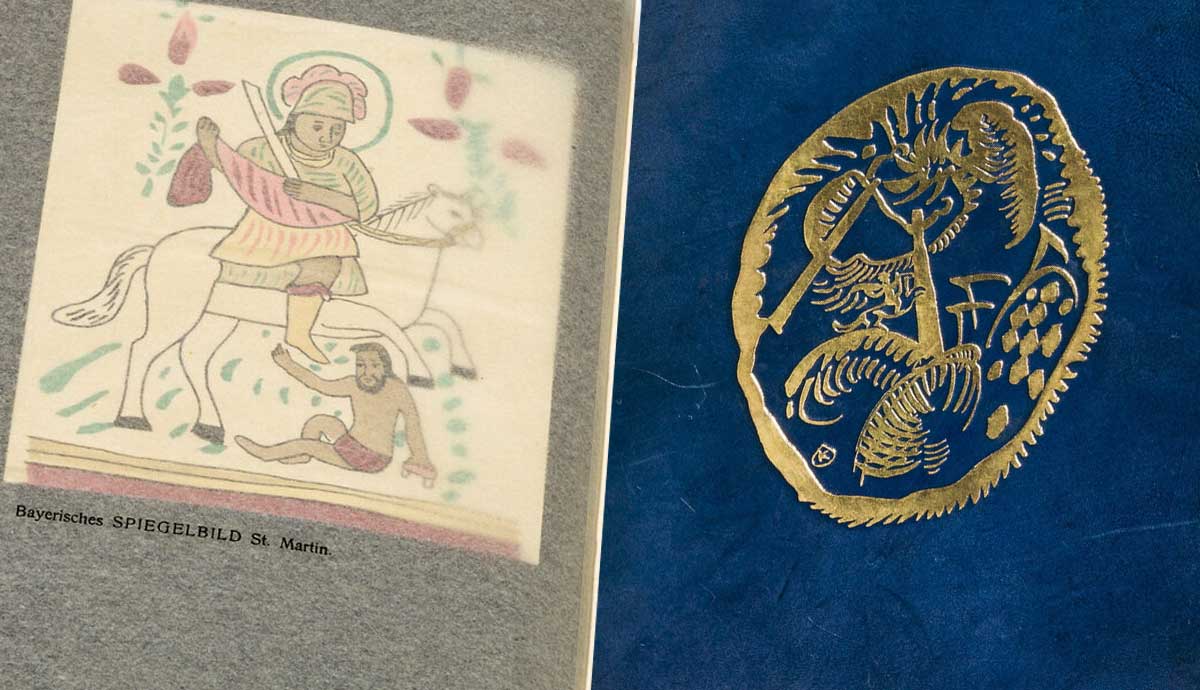
The Blue Rider Almanac was a showpiece for the Blue Rider art group in early 20th century Munich. Curated by the group’s founders Wassily Kandinsky and Franz Marc and published in 1912, this lavish publication united the group’s ideas into a dense volume. It contained essays, illustrations, reproduced works of art, historical studies and even musical scores. While the content was divergent, their vision was clear, to express “the spiritual in art” through the ages and across disciplines. We look through some of the content inside this world-renowned artist publication, and the key concepts that pulled everything together.
The Blue Rider Almanac Was One of the First Examples of a ‘Gesamtkunstwerk’

The Gesamtkunstwerk – or a ‘total work of art’ that brought multiple art forms into a singular whole – was a popular concept in early 20th century Europe. The Blue Rider Almanac is historically significant as one of the earliest examples of the concept. This is because it brought divergent art forms including writing, music and art from around the world into a single document. Marc and Kandinsky wrote in a joint statement, “The whole work, called art, knows no borders or nations, only humanity.”
The Almanac Focused on the Spiritual Essence of Art

In the same group statement, Marc and Kandinsky wrote, “We are standing at the threshold of one of the greatest epochs that mankind has ever experienced, the epoch of Great Spirituality.” While the many art forms they brought together came from different historical eras and artistic genres, their ultimate goal was to emphasize the utopian, modernist concept of art as a means of individualistic self-expression. This concept was a recurring theme throughout the development of 20th century arts and culture.
The Blue Rider Almanac Contained Contributions From Artists, Writers and Composers

Kandinsky and Marc selected this eclectic mix of material to demonstrate how art could be united by the expressive nature of its form, and its inherently spiritual quality. Their deliberately anti-academic, non-linear, ahistorical approach to collating objects and artworks demonstrated a new tolerant and open-minded approach to art from all ages.
Artworks From Throughout History
The Blue Rider Almanac contained a wide range of artwork reproductions from artists who the Blue Rider Group admired. They included work by El Greco, Vincent van Gogh, Henri Matisse, Pablo Picasso, Henri Rousseau and the Die Brucke artists along with art and objects from Latin America, Alaska, Japan and Africa. The almanac also published medieval woodcuts, carvings and tapestries, Egyptian shadow figures, Benin bronzes, children’s drawings and Bavarian glass paintings. In total, they included more than 140 different illustrations.
Musical Scores

Along with its extensive art catalogue, the album contained a series of musical scores by the Russian composer Alexander Scriabin and the Austrian composer Arnold Schoenberg, in an accompanying musical supplement. Both composers took a non-traditional, symbolist approach to musical composition.
Influential Essays

The Blue Rider Almanac contained a series of 14 major essays written by artists, composers and critics, all of whom shared with Marc and Kandinsky a desire to promote and pursue the “spiritual in art.” Kandinsky published two in-depth articles in the almanac, titled On the Problem of Form, and On Scenic Composition. He also included the libretto of his experimental play The Yellow Sound. Meanwhile Blue Rider artist Auguste Macke curated what he called the ‘Ethnographic’ section of the almanac. For this chapter he wrote a study of African tribal masks, and gathered a series of images.
The Blue Rider Almanac Was Limited Edition

Munich publisher Reinard Piper published only 1200 copies of the Blue Rider Almanac. They sold out almost immediately following their release. Marc and Kandinsky also designed a special deluxe edition of 50 copies which were bound in blue leather. These contained an additional two woodcuts – Bogenschutze (Archer), 1912, by Kandinsky, and Fabeltier (Fantastic Creature), 1912, by Marc.







